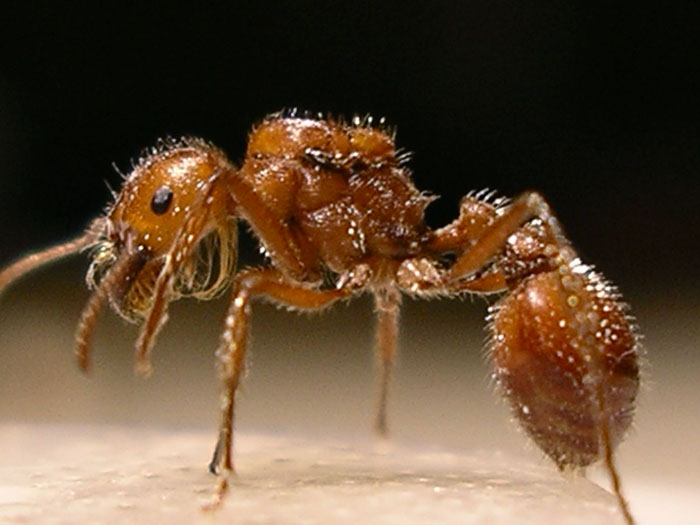Do either of them have any features that would allow me to do so either in the field or at least without a microscope?
Edited by Foogoo, December 1 2014 - 4:37 PM.

Do either of them have any features that would allow me to do so either in the field or at least without a microscope?
Edited by Foogoo, December 1 2014 - 4:37 PM.
Camponotus vicinus, Crematogaster 1, Crematogaster 2, Formica francoeuri, *, *, Myrmecocystus testaceus, Novomessor cockerelli, Pheidole hyatti, Pogonomyrmex californicus, Pogonomyrmex rugosus, Solenopsis invicta
Yes, but it's hard. P. subnitidus have spines and P. californicus do not. Luckily, the spines on P. subnitidus are fairly large, and if you look close enough and have good enough eyes, you can sometimes spot them without a scope.
Yes, but it's hard. P. subnitidus have spines and P. californicus do not. Luckily, the spines on P. subnitidus are fairly large, and if you look close enough and have good enough eyes, you can sometimes spot them without a scope.
I'm looking at Google, Antweb and Bug guide and not seeing these spines you speak of. Do you have a good picture example?
Camponotus vicinus, Crematogaster 1, Crematogaster 2, Formica francoeuri, *, *, Myrmecocystus testaceus, Novomessor cockerelli, Pheidole hyatti, Pogonomyrmex californicus, Pogonomyrmex rugosus, Solenopsis invicta
Edited by Gregory2455, December 3 2014 - 2:43 PM.
The spines on the queens are a lot harder to see.


So these are both P.subdinitus?
Edited by Gregory2455, December 3 2014 - 2:42 PM.
P. "subdinitus" - a new species. ![]()
0 members, 1 guests, 0 anonymous users